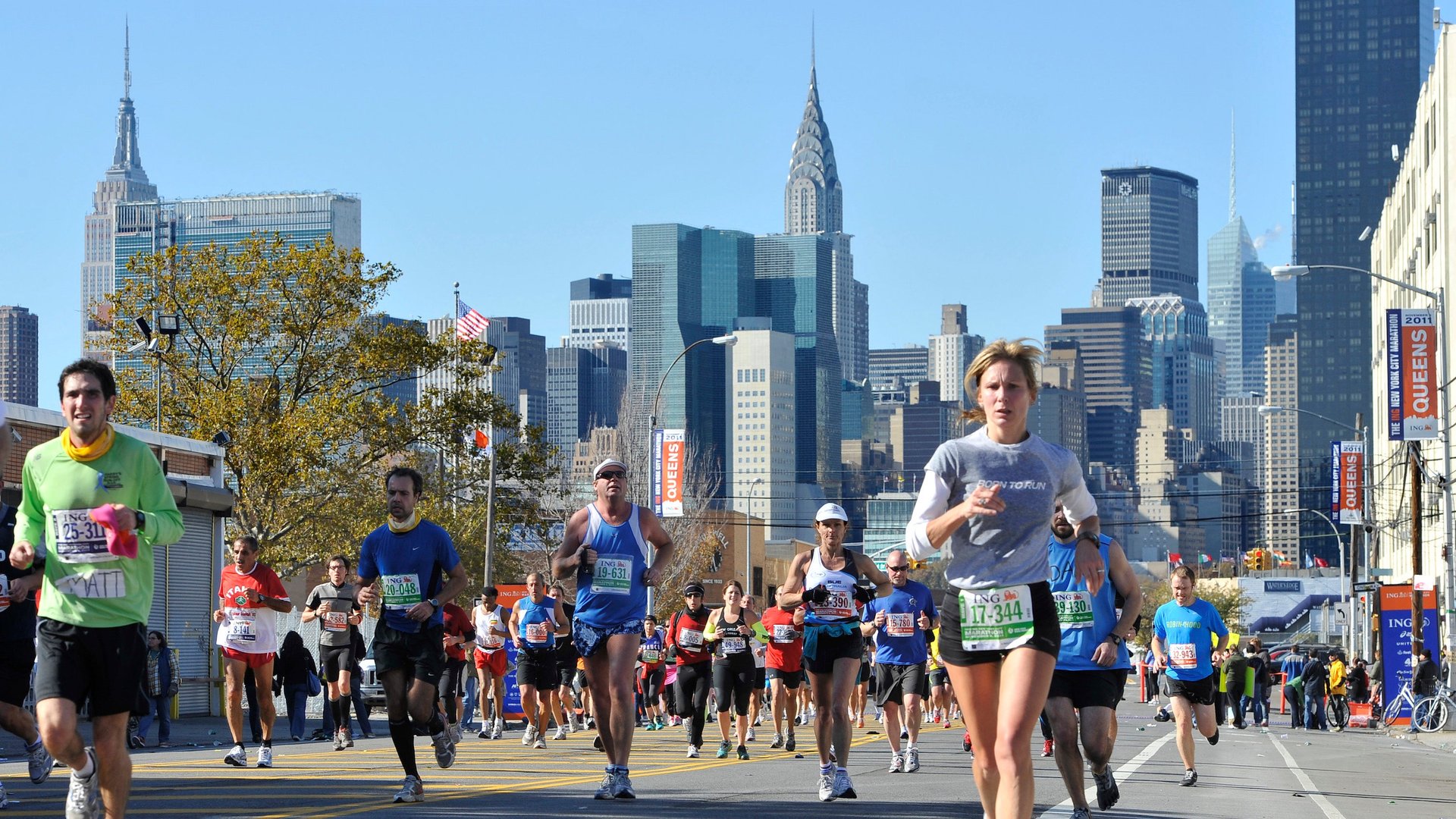Training for a marathon made me realize Americans’ dangerous obsession with pushing past our limits
Distance running is an endurance sport. Pain is right there in the formula. To be good at it, you have to learn to sometimes ignore the messages your mind and body are sending you.


Distance running is an endurance sport. Pain is right there in the formula. To be good at it, you have to learn to sometimes ignore the messages your mind and body are sending you.
On my high school cross-country team, we wore rubber bands around our wrists with a slogan borrowed from Nike: “You are faster than you think.” At times the motto seemed like magic, urging me to have confidence in my capabilities and push myself a little harder. Although I was never super fast, I excelled at following directions. That made me valuable to my coaches, intent on winning the annual championships. Give me a workout schedule for summer break, and I’d do it to the letter. Tell me to pass someone in the final half mile of a race, and I’ll wear my body out trying.
But the idea that we are always capable of more has a dark side. I’ve been running since I joined the middle-school cross-country team at age 11; I’ve harbored a fundamental mistrust of my body ever since. And as I learned training for a marathon this year, I still don’t always know when to stop.
I spent the past spring trying to follow a training plan for marathons that I’d downloaded online. But I couldn’t resist pushing myself to go beyond the recommendations. I snuck in runs on days marked “rest” and ignored the advice that walking counted as cross training. I’d go for a jog even after a day of hiking around my Brooklyn neighborhood on foot, delighted to watch the step count on my iPhone go up and up and up.
Then in June, at the end of an ordinary three-mile jog, I felt a sharp pain in my knee. I had to concentrate so I wouldn’t topple over as I hobbled back to my apartment.
When I tried to run again two days later, I made it barely half a mile before the pain came flooding back. My conditioned worsened. I decided that maybe I had a tense muscle, and took an orange massage stick to the inside of my leg until it was black and blue—but no better. As I watched days, then weeks, of valuable training time slip by before the September race date, I felt terrible inside and out.
Part of the problem lay in my personal history with running. But we all live in a culture that tells us to push our bodies past our limits. We tune into The Biggest Loser, where contestants shed pounds by the triple digits. You are lighter than you think! We click on pictures of celebrities who use waist trainers to smoosh themselves into hourglass figures. You are more conventionally desirable than you think! Ads implore us to slather on anti-aging creams and chug energy drinks and detox with juice cleanses, because we are younger and more energetic and need less solid food than we think.
None of this works, really. Game-show contestants gain back the weight. Aspiring Kardashians return to their previous shapes. We get headaches, upset stomachs, and worse. And runners like me get hurt, because we’ve taught ourselves to stop listening to our bodies.
A study published earlier this year in the International Journal of Sports Physical Therapy found that some 75% of elite marathon runners have muscoskeltal pain at any given time. It happens at the amateur level, too: Around quarter of people who sign up for the New York City marathon never make it to the starting line, reportedly in large part because of injuries.
According to sports psychologist Jonathan Fader, author of the book Life as Sport, the way we form goals is partly to blame for this mess. “We say, ‘Hey, I want to run this time, I want to finish this marathon.’” But, he notes, “You don’t really control whether you finish a marathon or not.” The race could be canceled because of weather. You could get dehydrated partway through and be forced to stop. Or you could develop some strange knee pain in the weeks before the race.
Instead of fixating on external markers of athletic or physical success, Fader tells his clients to focus on what they can control—like their daily exercise routines and how they respond to setbacks. “I’m a jungle guide,” Fader says of his job. “Everybody’s got their own jungle.”
Now I’m finally getting to know my own. I went to the doctor in the summer, hopeful that an X-ray might identify a problem that could be fixed in time for me to run the marathon. But as it turned out, I had an inflamed knee pad. All I could do was rest. I asked for tips about how I might speed up the recovery process, but he said the best thing I could do was sit on the couch if my knee hurt. Pay attention to your pain, he said.
I spent a healthy chunk of July indoors. As my injury healed, I let go of the idea that I’d run 26 miles in the fall. Instead, I started taking the subway to the YMCA. I knew I had to listen to my body, and right then it was telling me that I couldn’t run. But one thing I could do was swim.